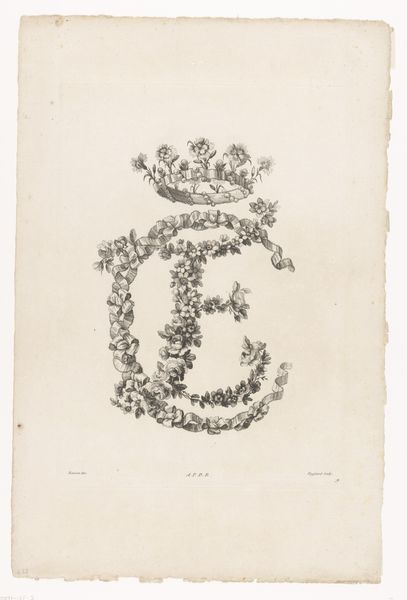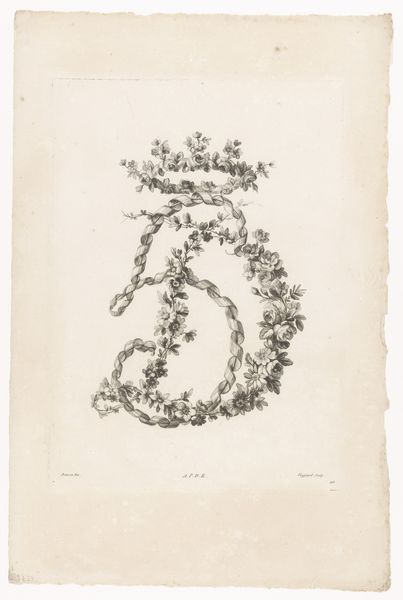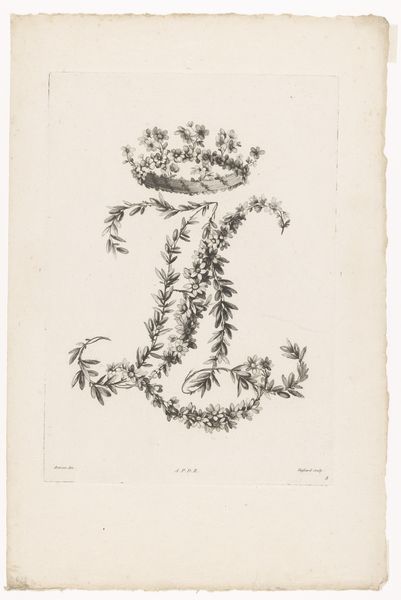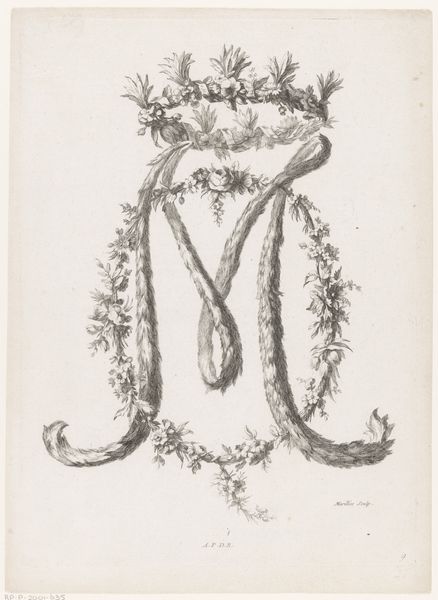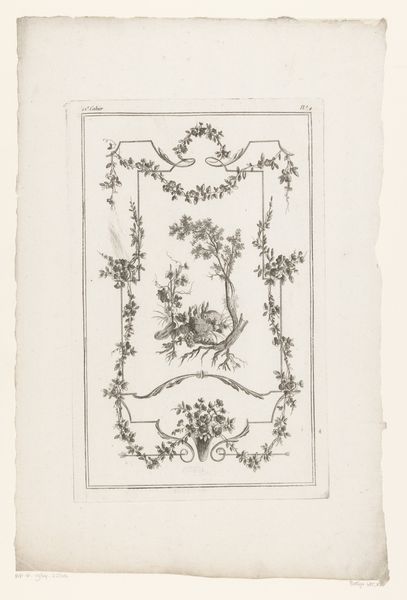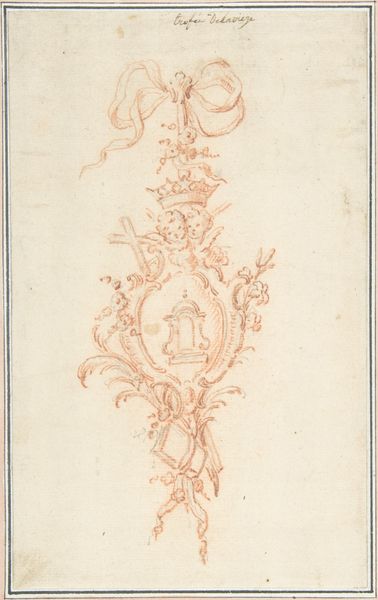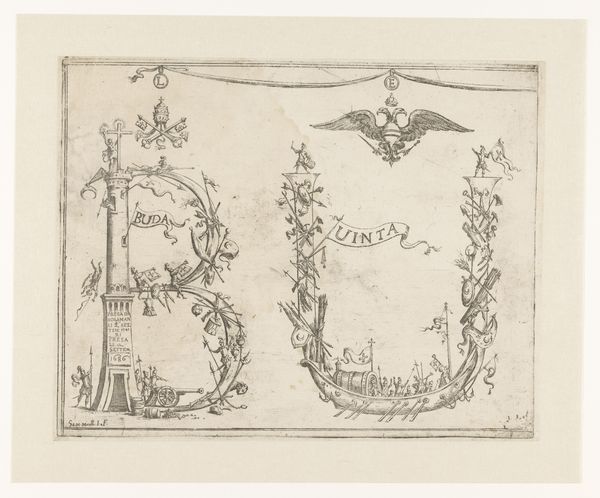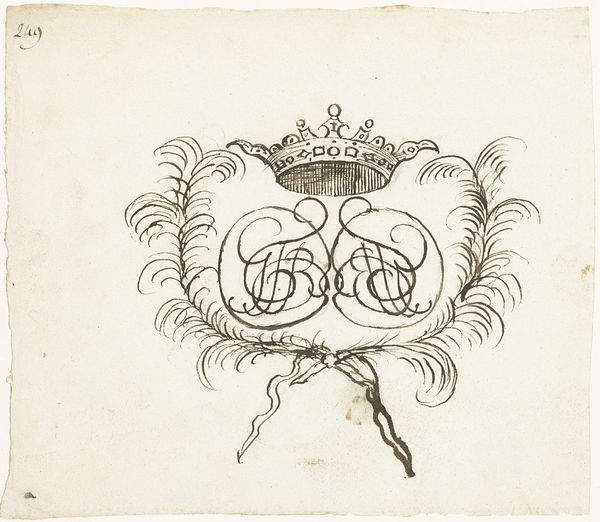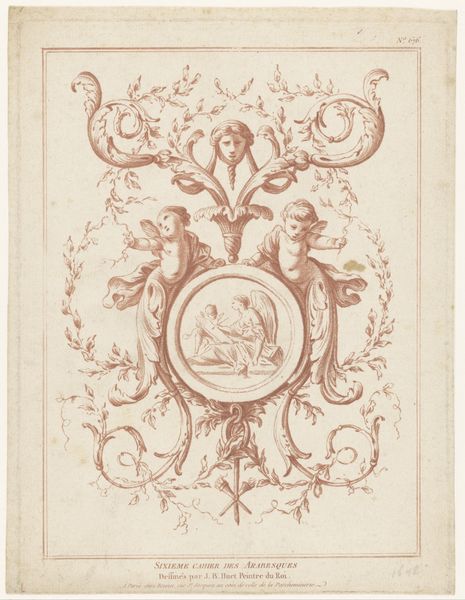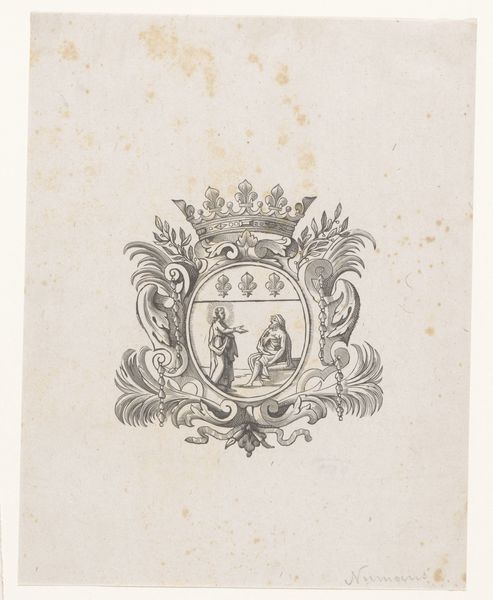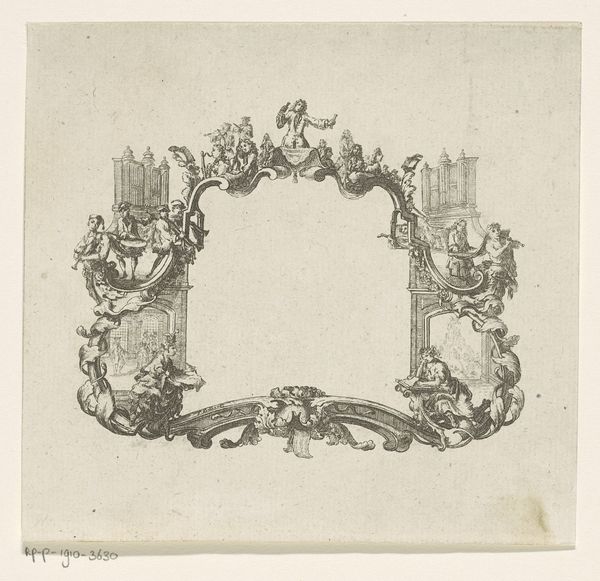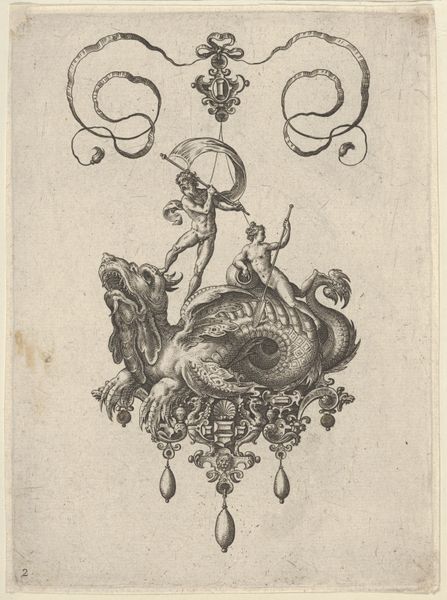
Dimensions: height 331 mm, width 237 mm
Copyright: Rijks Museum: Open Domain
Editor: This delicate ink drawing, "Letters J en M," from around 1768 to 1786 by Etienne Claude Voysard, features floral letters intertwined with ribbons. The refined style makes me think of ornate monograms on royal stationary. What do you make of the image? Curator: It's intriguing how these elaborate initials reveal so much about 18th-century aristocratic culture and its relationship to artistic production. These weren't just decorations. Monograms like this were potent symbols of power, identity, and belonging within the elite social circles. What impact do you think prints like this had on broader society at the time? Editor: I imagine it would have promoted an ideal of elegance and refined taste, particularly among those who aspired to join the upper classes. Did its artistic quality contribute to the status and influence of the elite? Curator: Absolutely. The skill and expense involved in creating such an intricate design broadcasted the commissioner's wealth and refinement. The Rijksmuseum would have originally been private property, where these ideas could propagate in isolation, right? This piece serves as an advertisement for an ideal that only the wealthy could afford to attain. Its creation and circulation demonstrate the socio-political functions of art and its contribution to perpetuating a stratified social structure. Editor: So, something that looks ornamental can actually speak volumes about social power. It’s interesting to consider how artworks, even seemingly decorative ones, reflect and reinforce broader power dynamics. Curator: Exactly. This "Letters J en M" isn’t merely decorative; it's a cultural artifact reflecting the values and power structures of its time. The initials, design and history speak of wealth and luxury only afforded to a few, something easily lost without the social-historic lens.
Comments
No comments
Be the first to comment and join the conversation on the ultimate creative platform.
